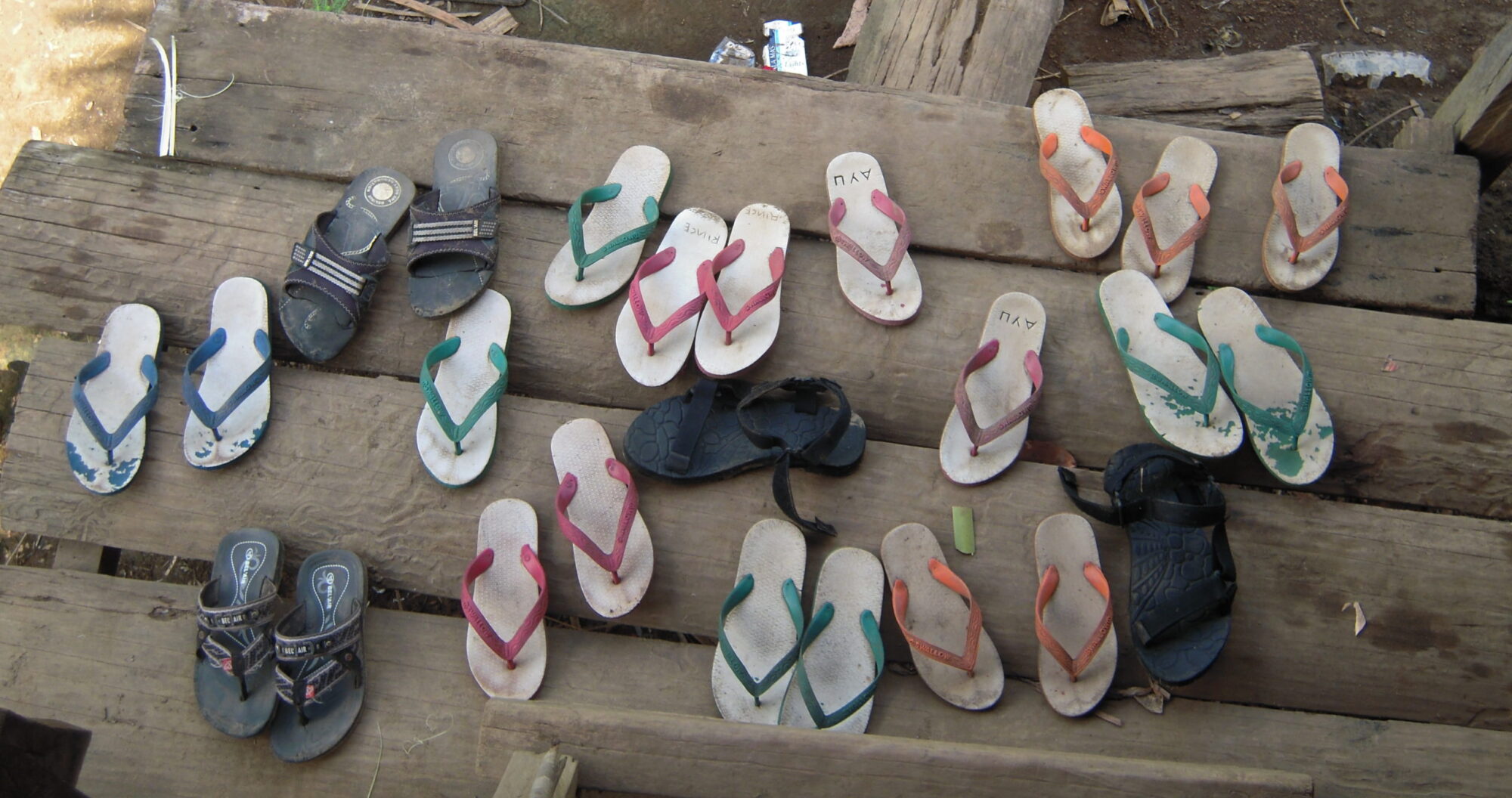A mouth harp with a case made to carry it safely while travelling. The instrument is
made from the palm of the enau tree; from the plant, they obtain a thin rectangle in which
the gila (lamina) is obtained and this acts as a vibrating body. Small holes are made,
through which two thin chords of bark are passed and fixed. These strings are used both to
hold the instrument (with the left hand) and to make the blade vibrate (when the other is
pulled with the right hand).
The rhythmic pulling of the string causes the vibration of the foil, and consequently the emission of the sound. The case, called the tonga yori, has a tubular shape and is made of bamboo. Once the yori is stored in its case, strings are tied around the outside to secure it and to allow it to be safely transported.
Apa Sudin told me: We played this when we did not have the guitar.
Although in the past this instrument was very widespread, the use of the yori now seems to have completely disappeared. Because of bad eyesight, the man who made the instrument for me had to be helped by his son, who had never seen the instrument before. As might be expected, the long period of obscurity for this instrument also meant that I could find no players. People I interviewed knew how to make the instrument sound, but they did not have the knowledge to play whole melodies.

Reseach interests: Death, Religion, Music, Shamanism, Emotion, Humor, Visual Anthropology, Pop-Culture